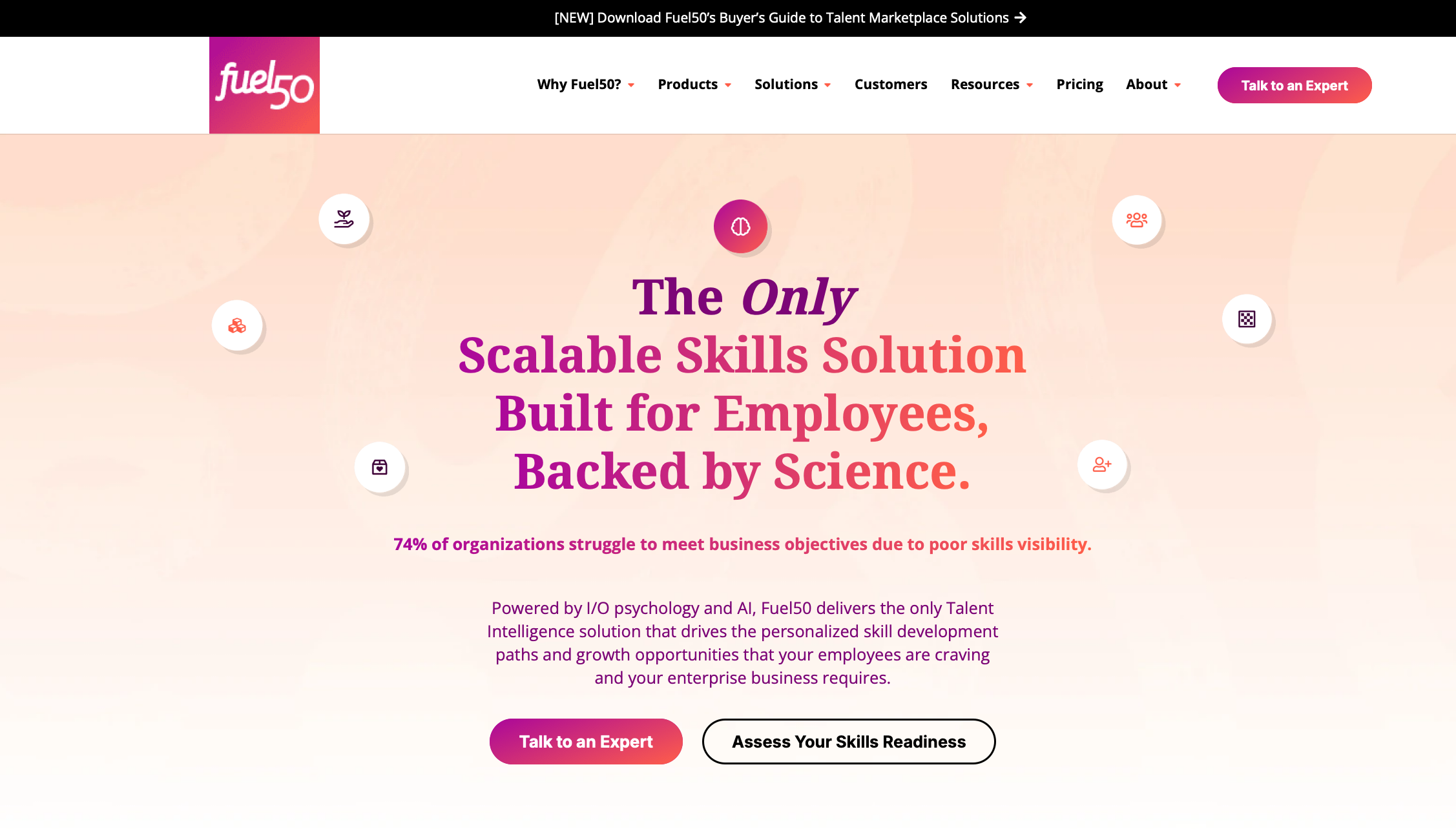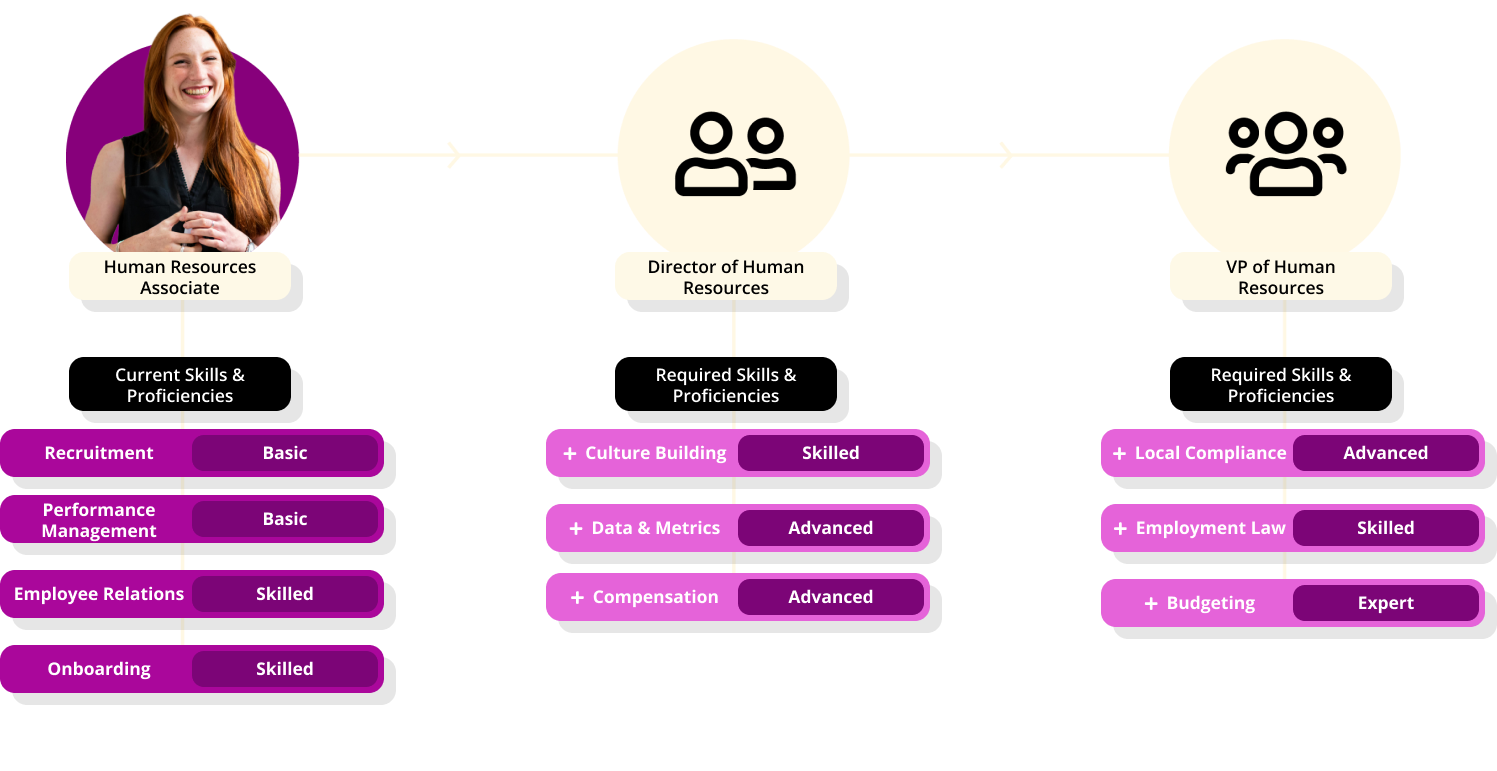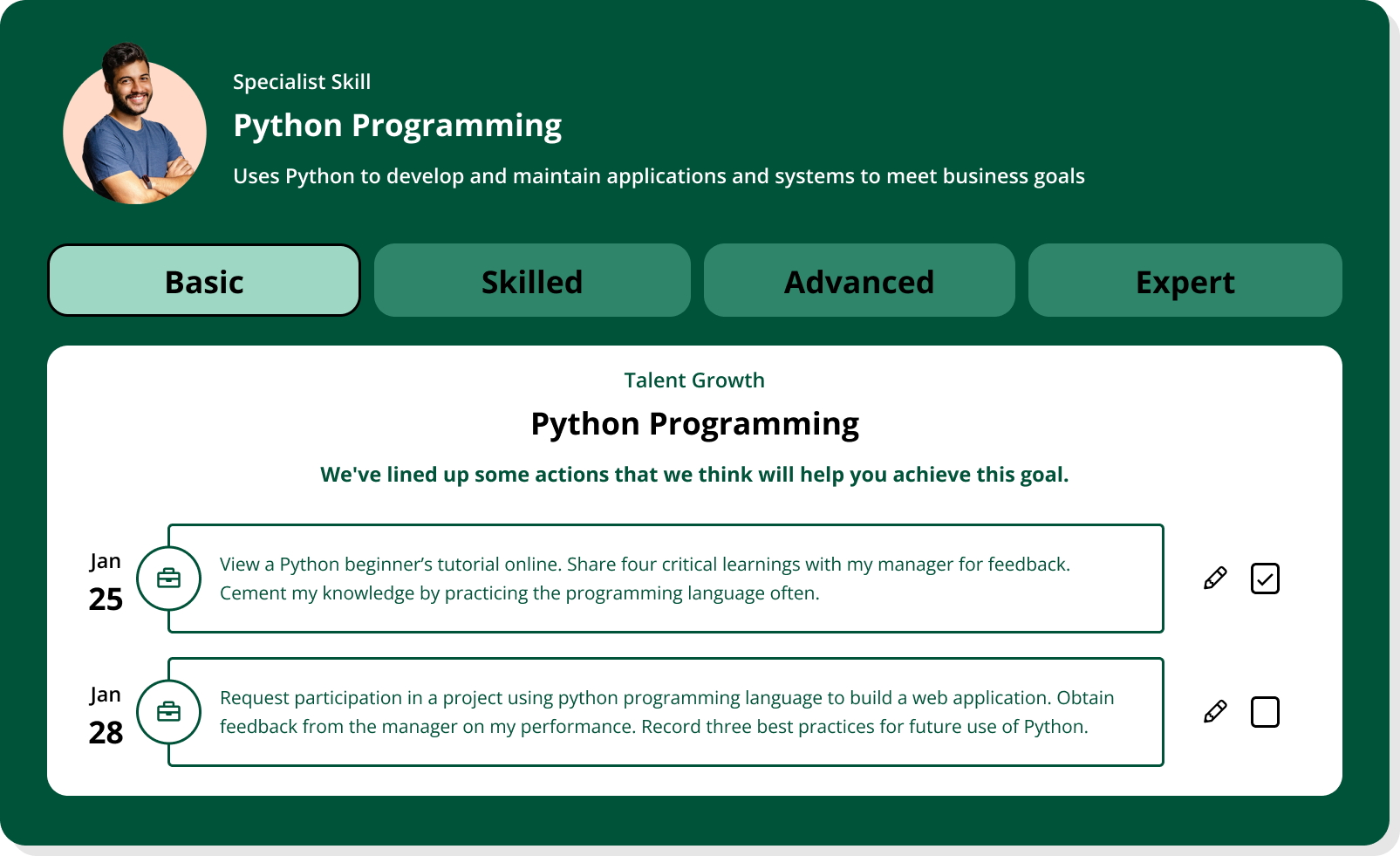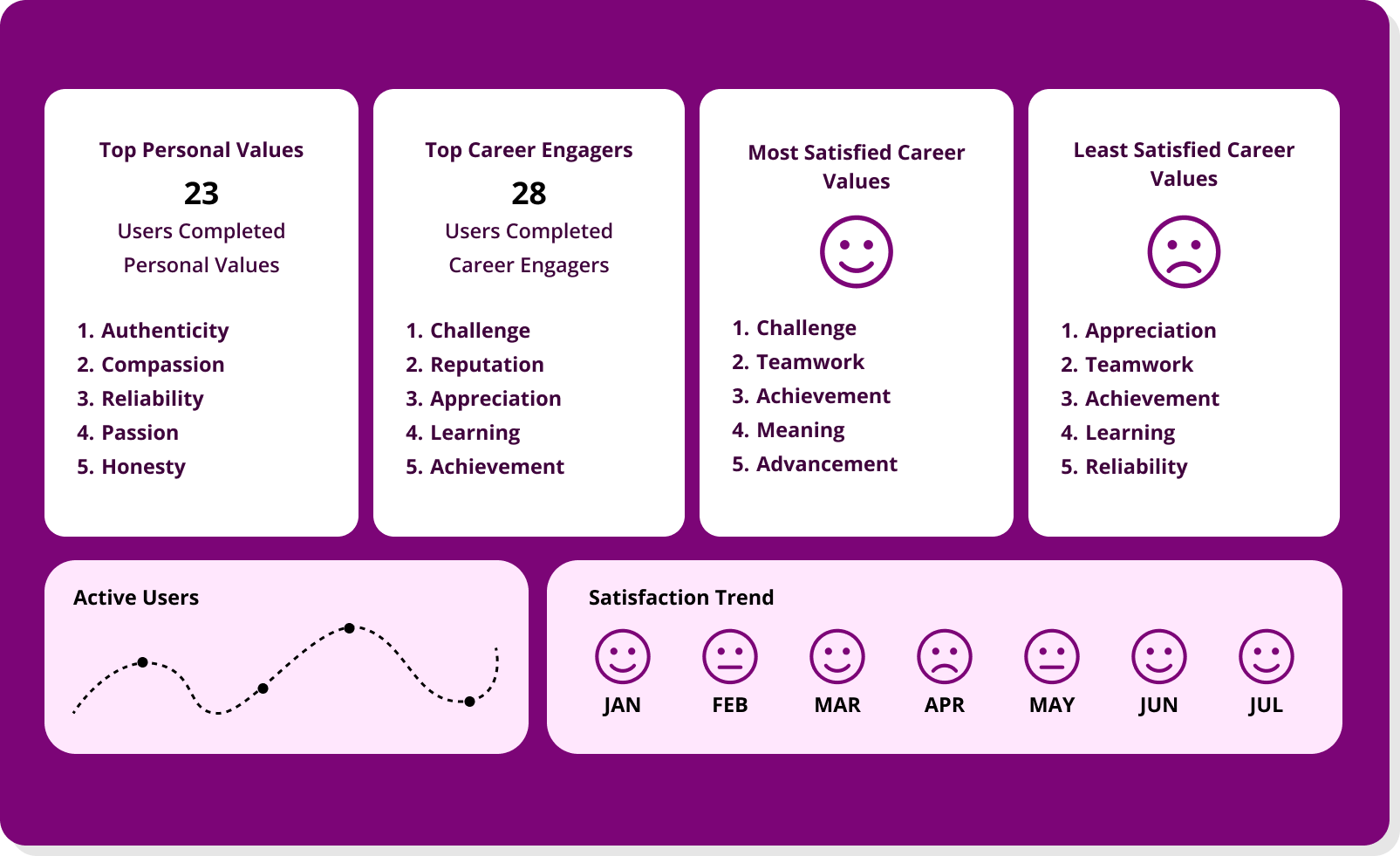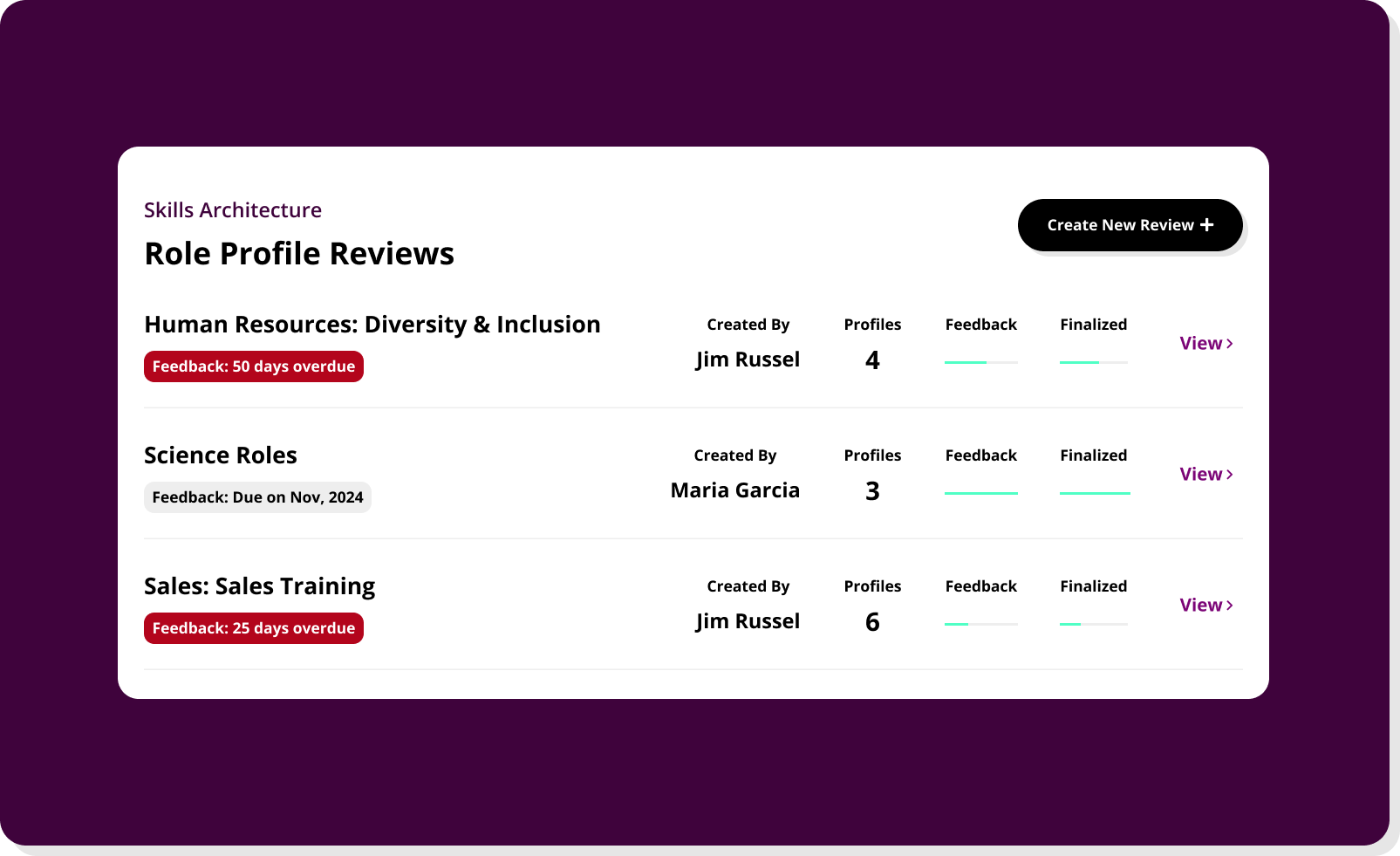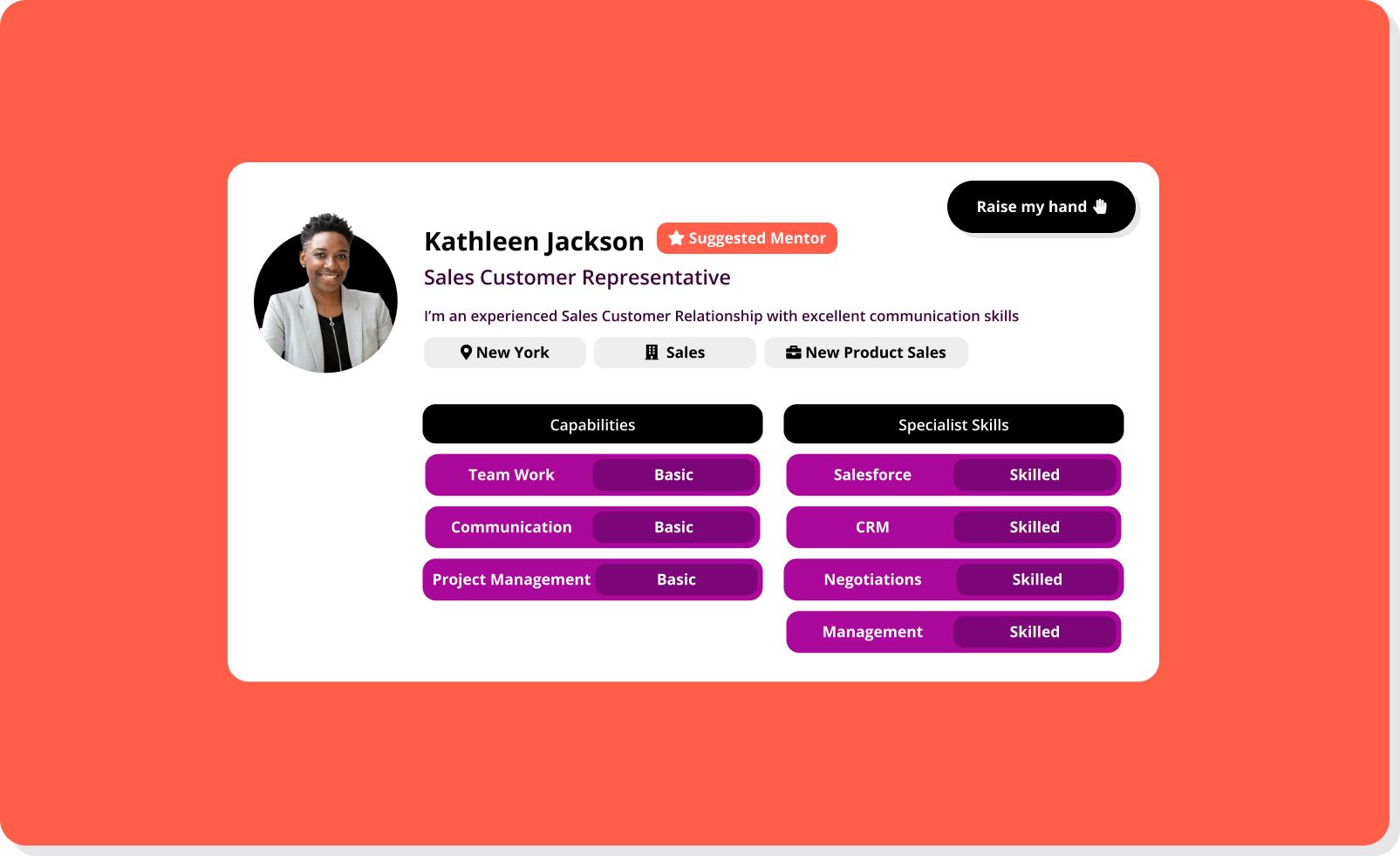HR leaders today are expected to make workforce decisions with precision: where to invest in skills, how to reduce attrition, who to promote, where to hire, etc. Yet, they don’t have the necessary intel.
Although organizations have head counts, attrition rates, performance scores, and engagement results, many lack a clear, connected view of what that data means and how to act on it. As a result, HR teams scramble to react to vacancies, turnover, and shifting business priorities that they weren’t looped into soon enough.
Workforce intelligence changes that. It synthesizes scattered personnel data into insights that support decision-making, answering questions like: What skills will we need in six months? Which teams are stretched too thin? Where can we promote from within instead of buying externally? How do we ensure our talent strategy matches our business strategy?
This article breaks down what workforce intelligence really is, why it’s becoming a business necessity, and how organizations can implement it effectively. We’ll also show how Fuel50 enables this shift and helps companies move from fragmented reporting to connected, scalable intelligence that drives results.
What is workforce intelligence?
Most companies track personnel data (e.g., head count, turnover, demographics), but that doesn’t equate to applying workforce intelligence.
Workforce intelligence goes beyond static HR metrics. It collects and analyzes real-time data across the employee life cycle to answer critical questions like:
- Where are we at risk of losing key talent?
- Which teams are understaffed for future initiatives?
- What skills are growing, shrinking, or missing across the organization?
At its core, workforce intelligence is the practice of turning workforce data into actionable insights for decision-making. It combines internal data, like performance, engagement, and skills, with external labor trends to paint a full picture of your talent landscape both now and in the future.
Here’s a simple way to think about it: Traditional HR reporting tells you what happened, while workforce intelligence helps you understand why it happened and what to do next.
This shift from surface-level reporting to applicable synthesis is what enables HR and business leaders to move from being reactive to proactive. Instead of scrambling to backfill roles or run ad hoc engagement surveys, organizations with strong workforce intelligence systems can anticipate gaps and course-correct early.
Why workforce intelligence is essential
As previously stated, most companies already collect metrics like attrition, engagement scores, skills assessments, and career progression. The issue is that these data points are siloed and rarely connect to strategic business decisions. They tell HR what happened but not why and certainly not what to do next.
This is where workforce intelligence proves its worth, not as a dashboard or reporting layer, but as a decision-making engine that helps organizations navigate uncertainty, talent scarcity, and change.
Let’s break down why its adoption is critical.
It enables proactive talent retention, not reactive damage control
By the time attrition shows up in a quarterly report, it’s already too late.
Most HR teams can identify which teams are losing people, but few can pinpoint the root cause to try and avert it. This is the core failure of traditional HR reporting; it’s diagnostic, rather than predictive.
Workforce intelligence changes that dynamic by incorporating data into engagement, performance, internal mobility, and managerial behavior to detect risk patterns early.
For example, if top performers in a specific region routinely leave within 12 months of promotion, that’s a concerning trend. Maybe there’s a lack of support post-promotion, or career growth stalls.
A robust workforce intelligence system reveals such patterns and flags them for intervention before the next wave of exits.
It also identifies who might leave and why and enables targeted actions such as reengagement strategies, managerial coaching, or personalized development plans. This shifts HR from the clean-up crew to a strategic partner that mitigates talent loss before it erodes capability.
It aligns talent strategy with business direction
Most HR leaders are left to respond to business decisions after the fact. The company enters a new market? Time to post 40 open roles. A product shift brings new tech stacks? Start hiring for skills we don’t have.
This reactive cycle is inefficient and expensive.
Workforce intelligence equips HR to work in sync with business planning. It reveals the skills, roles, and talent pipelines required for future business scenarios before decisions are finalized.
For example, if the company’s five-year plan includes growing digital capabilities in EMEA, workforce intelligence can show whether the right talent already exists internally, which teams are reskilling fastest, and where gaps are likely to emerge.
Instead of launching a generic hiring push or hoping employees upskill in time, HR can build strategic workforce plans rooted in real data. Internal mobility programs, targeted learning paths, and succession pipelines can be designed with intention because the talent picture is already clear.
This transforms HR from order-takers to proactive contributors at the strategy table.
It gives HR credibility by translating data into business insight
Business leaders speak in forecasts, revenue, cost, and productivity. Meanwhile, HR often shows up with turnover trends, engagement scores, and slide decks full of charts that don’t drive action.
Workforce intelligence bridges that gap.
When HR leaders can walk into a boardroom and say, “If we continue losing engineers at this rate, we’ll miss our product roadmap timeline by Q4,” the other stakeholders will listen. When they can demonstrate how increasing internal mobilityby 15% can save $1.2 million in external recruiting costs, they demonstrate strategic insight and are more likely to be taken seriously.
With workforce intelligence, HR is able to makelogical recommendations. They don’t just observe; they also anticipate, and that earns influence.
It prevents wasted investment in initiatives that don’t work
Companies pour money into L&D platforms, engagement tools, DEI initiatives, and other programs, but often struggle to measure the actual impact. These programs are then renewed by default, cut arbitrarily, or replaced by the latest vendor promising better results. In every case though, HR is flying blind.
Workforce intelligence changes that by connecting initiatives to measurable outcomes. For instance, if a leadership training program correlates with improved retention and internal promotion rates in a specific region, that’s a signal to double down. Conversely, if a high-visibility DEI initiative hasn’t meaningfully improved representation at the managerial level, that strategy demands rethinking.
This layer of accountability ensures HR’s investments move the needle and business leaders see tangible returns from talent programs.
The key components of workforce intelligence
Workforce intelligence is a layered capability built from interconnected components. When organizations treat it like just another analytics dashboard or plug-in, they miss the point.
To generate tangible business value from workforce intelligence, four core components must be in place: integrated data infrastructure, contextualized analytics, skill-centric modeling, and actionable delivery mechanisms.
Let’s break down each one.
1. Integrated data infrastructure: Breaking HR data silos
Most HR teams work with fragmented systems: one for performance reviews, another for skills tracking, a third for engagement surveys, and several others for hiring, learning, and compensation. The problem is, each system captures only part of the employee story, and none of them talk to each other.
True workforce intelligence starts by pulling these disparate data streams into a centralized, clean, and connected data layer. This integration is required for patterns to emerge. You might know that high performers are leaving, but you won’t see that they were also under-compensated and had no access to lateral moves.
Integration isn’t just about APIs or dashboards; it’s about creating a unified source of truth for your personnel data so you can analyze the full employee life cycle, not just isolated events.
2. Contextualized analytics: Going beyond “what” to “why” and “what next”
Once the data is unified, the next challenge is making sense of it in context.
Most modern HR analytics fall into two traps:
- They’re descriptive, not diagnostic: They tell you what happened, but not why.
- They lack context: They don’t connect to business priorities, workflows, or historical patterns.
Robust workforce intelligence platforms employ advanced analytics—often including machine learning—to surface root causes and predict future outcomes. Critically, they then translate these into business-relevant insights.
For example:
- Instead of just saying, “Turnover increased by 8% in the engineering department,” a contextualized analysis shows that voluntary exits among mid-level engineers with stalled internal mobility increased by 23%, largely in one geographic region and coinciding with a freeze on cross-border transfers.
- Instead of, “Learning engagement dropped last quarter,” it tells you that high-potential talent in customer success disengaged from development programs after they were reassigned to frontline support, derailing their progression goals.
These insights allow HR and business leaders to take targeted action.
3. Skills-centric modeling: The true unit of strategic workforce planning
Many organizations still use job titles or departments as their primary way of modeling talent.
However, the most valuable (and flexible) unit of workforce intelligence today is skills.
Skills reveal what people are capable of doing, not just what role they hold, and business strategy is increasingly skills-driven: launching new products, entering new markets, adopting AI—these all hinge on the right capabilities, not just the right head count.
A strong workforce intelligence model includes:
- A dynamic, evolving skills taxonomy that reflects both internal data and external labor market trends.
- Skill profiles tied to individuals so that internal mobility and reskilling opportunities are clearly visible.
- Adjacent skills that show not only what employees can do now, but what they could do with support, thus enabling intelligent upskilling and redeployment.
Without this layer, talent decisions remain rigid and reactive. With it, organizations can treat the workforce as a flexible ecosystem, deploying talent based on emerging needs and evolving abilities.
4. Actionable delivery: Highlighting the right insights to the right people at the right time
Even with great data and powerful analytics, workforce intelligence fails if it fails to reach decision-makers in an applicable way.
This is where most systems break down.
Insights sit buried in dashboards no one checks, or they’re delivered in generic PDF reports at quarterly reviews, by which point, it’s too late to act.
To yield results, workforce intelligence requires smart, timely delivery mechanisms that embed insights into decision-making workflows. For example:
- HR business partners receive live alerts when turnover risk exceeds a threshold in their business unit.
- Managers are nudged when someone on their team is due for a skills-based development conversation (based on existing gaps, not tenure alone).
- Executives see workforce capacity projections aligned with business roadmaps, broken down by location, skills readiness, and succession depth.
In short, the right people need the right insight at the right moment, and in a format that helps them act.
What happens when these components work together
When you build workforce intelligence on top of these four components, the system becomes more than the sum of its parts:
- You can predict critical talent risks.
- You can build—not just buy—the skills you need.
- You can shift from reaction to preventive strategy, from guesswork to precision.
Most importantly, this empowers HR to take the lead in shaping the workforce that drives the business forward.
How to implement workforce intelligence technology
Most companies approach workforce intelligence tech the wrong way. They buy a platform, expect the insights to appear magically, then are surprised when adoption stalls and dashboards gather dust.
Implementing workforce intelligence is an operational shift. You’re not simply adding a tool—you’re building a capability that requires clarity, coordination, and commitment across teams.
Here’s how companies that succeed with workforce intelligence technology do it.
Step 1: Start with a business problem
One of the most common implementation mistakes is starting with the technology itself—comparing platforms, asking for demos, building RFPs—without first clarifying the problem to solve.
Maybe your challenge is increasing regrettable attrition in key roles. Maybe it’s workforce planning for a strategic shift, or proving the ROI of an internal mobility initiative. The point is, implementation must begin with a use case that mattersto the whole business, not just HR.
Without this specificity, you risk launching another “HR tool” that fails to gain traction outside of the HR team.
Step 2: Audit and unify your personnel data sources
Workforce intelligence only works if it’s built on complete and connected information. That requires an honest audit of your current landscape.
Start by asking:
- What HR systems do we use (ATS, HCM, LMS, engagement tools, etc.)?
- Where does workforce data live, and how accessible is it?
- How is skills data captured (if at all)?
- Are our job and role taxonomies consistent, or a mess of custom titles?
You’ll likely find fragmentation, and that’s normal. The point of this step is visibility. You need to understand the state of your data in order to craft a realistic integration plan.
The goal here isn’t to rip and replace systems; it’s to connect what you have into a usable, analyzable foundation. Most leading platforms today are designed to integrate into a diverse HR tech stack, but incorporation will bear fruit only if the data pulled is structured and aligned.
Step 3: Define success metrics that matter beyond HR
This is where many implementations lose executive support.
You launch the technology, people log in a few times… and then silence. Why? Because no one defined what success looks like beyond usage metrics.
Strong implementation ties success to tangible, cross-functional business outcomes. For example:
- Reduce time to fill by X% through internal talent visibility.
- Decrease regrettable attrition in high-scarcity roles by Y%.
- Improve skill readiness for priority business initiatives (e.g., digital transformation, AI adoption).
These are the outcomes that matter to business leaders and the ones that justify continued investment.
Tip: Identify two to three key metrics tied directly to your initial use case (see Step 1) and secure early wins around those. Don’t try to boil the ocean.
Step 4: Embed insights in workflows
The more convenient workforce intelligence is, the wider its adoption.
It has to live where decisions are being made, whether that’s in a manager’s day-to-day task list, an HRBP’s planning process, or an executive’s quarterly review. This means:
- Building automated triggers for key events (e.g., mobility opportunities, flight risk alerts)
- Integrating insights into tools people already use (Slack, email, HRIS dashboards)
- Training frontline HR and managers not just on how to read the data but how to act on it
Workforce intelligence should not seem like extra work. It should feel like support.
Step 5: Invest in the human layer—training, trust, and change management
Technology doesn’t change organizations. People do. But people resist what they don’t understand or trust.
Rolling out a workforce intelligence platform without parallel investment in enablement is a fast path to failure. Instead, you need to:
- Train HR and business leaders on interpreting and applying insights.
- Explain to employees how their data is being used (and protected).
- Set clear expectations; this is not surveillance, but strategic support.
With trust, even basic insights can drive meaningful change.
How Fuel50 enables workforce intelligence at scale
Insights sitting on a dashboard don’t reduce attrition, close skills gaps, or build leadership pipelines. They need to be activated in the flow of work across the organization, at scale.
Fuel50 makes that possible. It’s a system built to understand, enrich, and mobilize your workforce in ways that fully align with how large enterprises operate.
A skills-based architecture at its core
The foundation of Fuel50’s platform is a dynamic, living skills ontology. Instead of a static list of competencies tied to job titles, it’s a continuously evolving network of skills, capabilities, and adjacencies. It reflects not only what roles people hold but also what they’re capable of doing now and potentially in the future.
Each employee receives a personal skills profile constructed from multiple credible data points, including self-assessments, managerial validation, peer feedback, learning history, and work experience across internal gigs and projects. Unlike HCMs that offer a snapshot during onboarding or performance reviews, Fuel50’s profiles update over time and reflect growth and capability shifts.
This living profile gives organizations a real-time view of workforce abilities. It allows you to understand where strategic strengths lie, where development is needed, and which pockets of the business are ready to flex into emerging demands. Insights that drive action, not just dashboards
While many platforms are limited to aggregating data, Fuel50 goes further by delivering insight in a form that prompts decisions. HR teams don’t have to interpret charts manually or conduct additional analyses just to understand the current state of affairs.
Fuel50’s intelligence engine identifies patterns and trends relevant to business outcomes. For instance, rather than reporting who’s disengaged, it connects that disengagement to stalled progression or mismatched skills, offering a narrative that helps HRBPs and leaders take action. Similarly, when it pinpoints critical roles with no succession depth, it shows where potential successors exist in the organization, what skills they need to build, and how close they are to being ready.
Whether you review head count plans, plan internal mobility strategies, or design leadership development programs, Fuel50 brings the right insight to the right conversation so action can follow immediately.
Activation through mobility, mentoring, and gigs
One of the biggest reasons workforce intelligence fails in organizations is that employees never see the benefits. They’re assessed, reviewed, and tagged in the system, but never offered the opportunity to grow. That erodes trust and undermines adoption.
Fuel50 solves this by closing the loop between insight and opportunity. Once gaps or needs are identified, employees are presented with a personalized set of actionable options (.e.g., gigs, projects, mentoring relationships, learning journeys, or open internal roles) that align with their current skills and future goals.
For example, if an employee is strong in adjacent skills but lacks experience in a high-priority capability, they might be recommended for a short-term project to build that skill on the job. Or, if they’ve expressed interest in leadership, they might be matched with a mentoring opportunity that fast-tracks their development.
This active engagement helps close skills gaps, increases retention, drives engagement, and builds internal mobility pipelines organically. The intelligence becomes something employees experience, rather than a forgettable number that HR reports.
Designed for enterprise scale and complexity
Many tools in the HR space claim to offer workforce intelligence, but then fall apart in large, complex organizations. Fuel50 doesn’t.
From the ground up, Fuel50 is designed to support global enterprises with varied job structures, multiple business units, diverse compliance needs, and fragmented HR tech stacks. That means its skills framework can be customized to match your organization’s language. You can incorporate its data infrastructure into existing HCM, ATS, LMS, and engagement systems. Its permissions model can reflect real-world nuances like matrix reporting lines, regional restrictions, and data access policies.
This level of configurability is critical not just for implementation, but also for ongoing usability. With it, Fuel50 becomes an integral component of your organization’s operating fabric.


